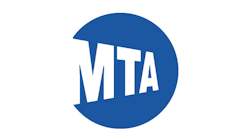Why not show your support by participating in the 12th annual Car Free Day Sept. 22 every day when possible? Millions of Americans today are utilizing and returning to various public transportation alternatives, including local and express bus, paratransit van, ferry, jitney, light rail, subway and commuter rail services. All of these systems use less fuel and move far more people than conventional single occupancy vehicles. Most of these systems are funded with your tax dollars.
Depending upon where you live, consider the public transportation alternative. Try riding a local or express bus, paratransit or commuter van, ferry, light rail, commuter rail or subway.
Leave your car at home when possible. For local trips in the neighborhood, walk or ride a bike. In the New York Metropolitan area — for longer travels, consider many public transportation alternatives already available. The New York Metropolitan Transportation Authority (MTA) has various operating agencies, including New York City (NYC) Transit subway, bus and Staten Island Railway, Long Island Rail Road, Metro-North Railroad, and MTA Bus. The ancestors to MTA Bus that operated in NYC were eight private franchised bus operators including Queens County-based Steinway Bus and Queens Transit, which combined to become Queens Surface Bus Corporation; Green Bus, Jamaica Bus and Triboro Coach; Kings County (Brooklyn) based Command Bus, previously Pioneer Bus; along with Bronx based New York Bus and Liberty Lines Bronx Express. NYC between 2005 and 2006 entered into an agreement with the MTA transferring their routes and equipment to the newly created MTA Bus.
There is also New Jersey Transit, Port Authority Trans Hudson subway, NYC Department of Transportation Staten Island Ferry and NYC Economic Development Corporation private ferry program. On Long Island, there is the Nassau Inter County Express, formerly Long Island Bus and before that known as Metropolitan Suburban Bus Authority; city of Long Beach bus systems; along with Suffolk County Transit Bus and town of Huntington Area Rapid Transit Bus.
North of NYC, in the lower Hudson Valley, there is the Westchester Bee Line Bus, Transport of Rockland County, Putnam Area Rapid Transit Bus, Dutchess County Loop (includes the old city of Poughkeepsie Bus) and Ulster County Bus (includes the old city of Kingston Bus).
In upstate New York, the four largest transit operators are the Niagara Frontier Transportation Authority in Buffalo, Rochester Genessee Regional Transportation Authority in Rochester, Central New York Regional Transportation Authority in Syracuse and Capital District Transit Authority in Albany. These also provide service in the surrounding suburbs.
Some of the other smaller upstate New York transit operators include Broome County Transit, Chemung County Transit, Greater Glens Fall Transit, Ontario County Transit System, Tompkins Consolidated Area Transit, City of Oneonta Public Transit Bus and Corning-Erwin Area Transit System.
These systems use less fuel and move more people than cars. In many cases, your employer can offer transit checks to help subsidize a portion of the costs. Utilize your investments and reap the benefits. You'll be supporting a cleaner environment and be less stressed upon arrival at your final destination.

Larry Penner
Larry Penner is a transportation advocate, historian and writer who previously served as a former director for the Federal Transit Administration Region 2 New York Office of Operations and Program Management. This included the development, review, approval and oversight for billions in capital projects and programs for New Jersey Transit, New York Metropolitan Transportation Authority, NYC Transit bus, subway and Staten Island Railway, Long Island and Metro North railroads, MTA Bus, NYCDOT Staten Island Ferry along with 30 other transit agencies in New York and New Jersey.




